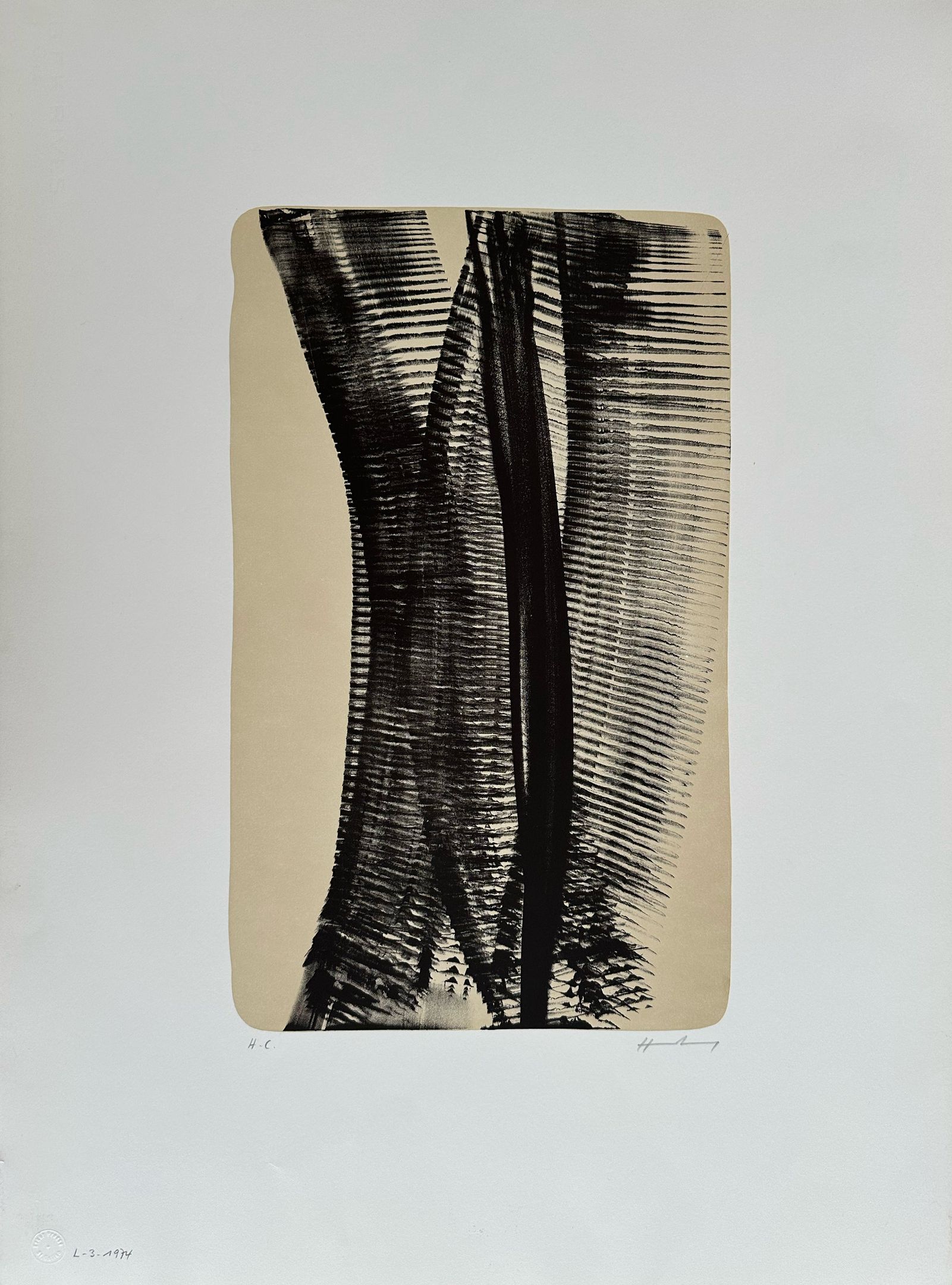


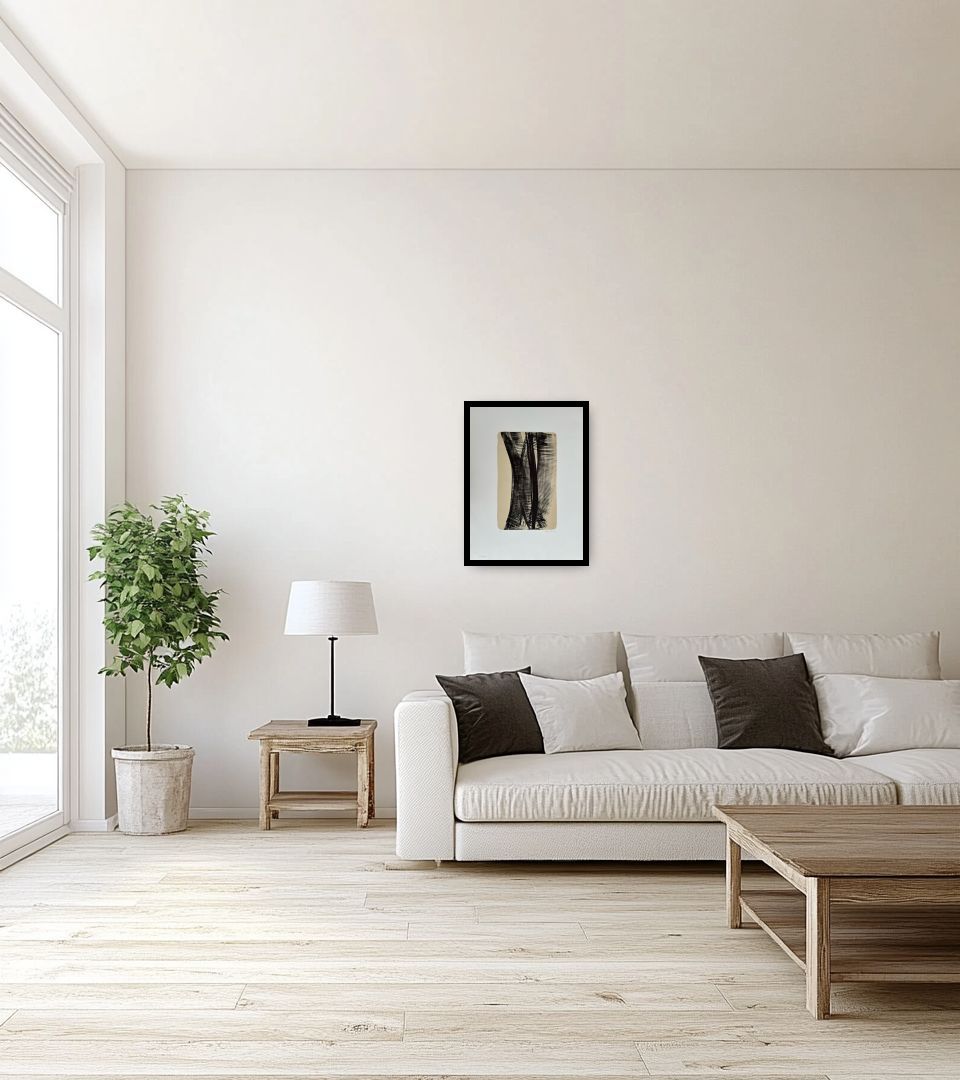
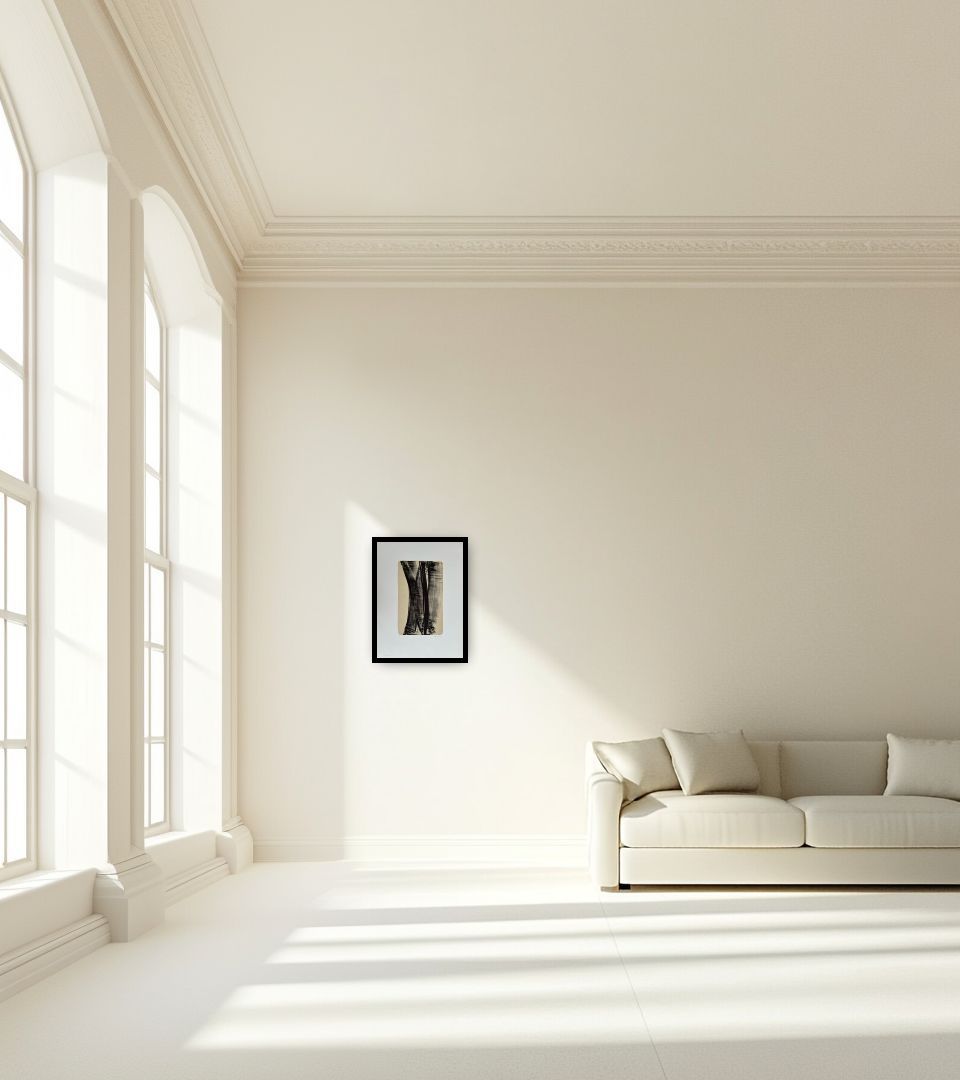
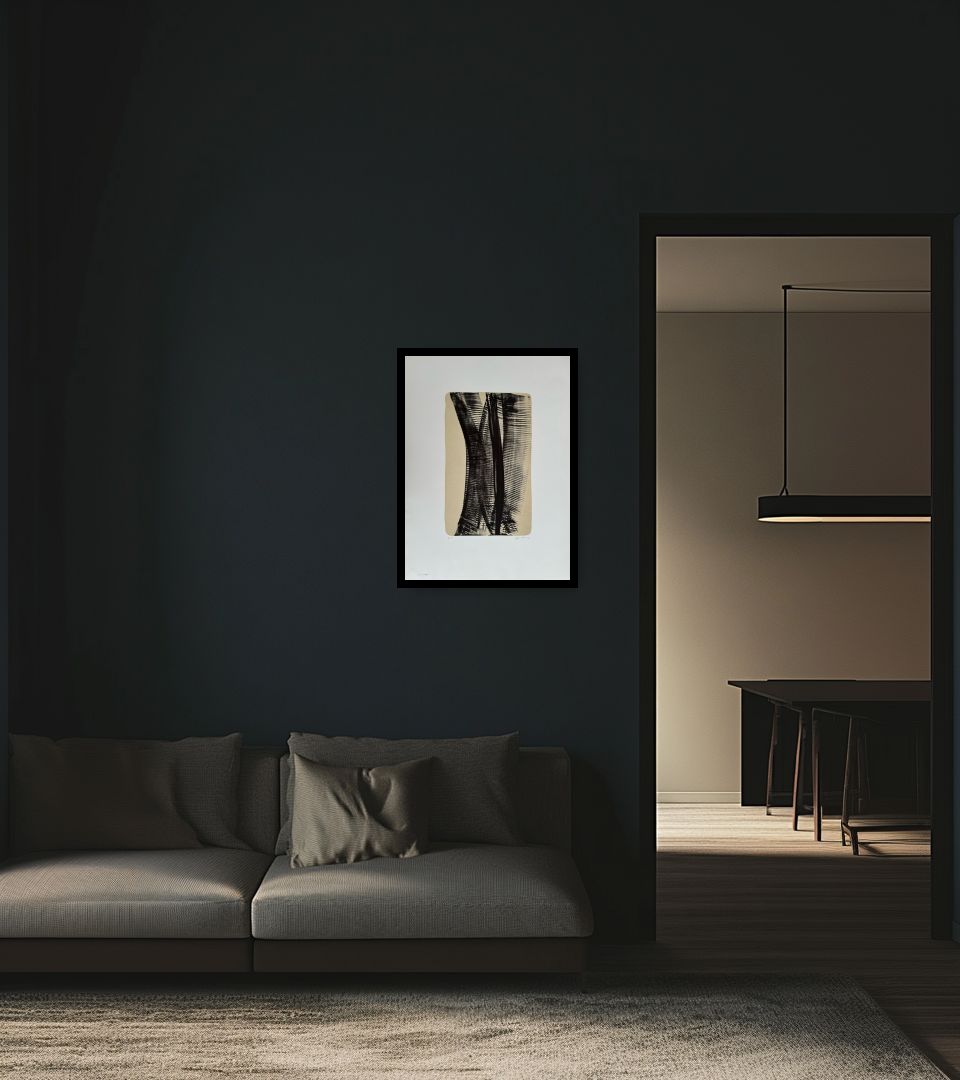
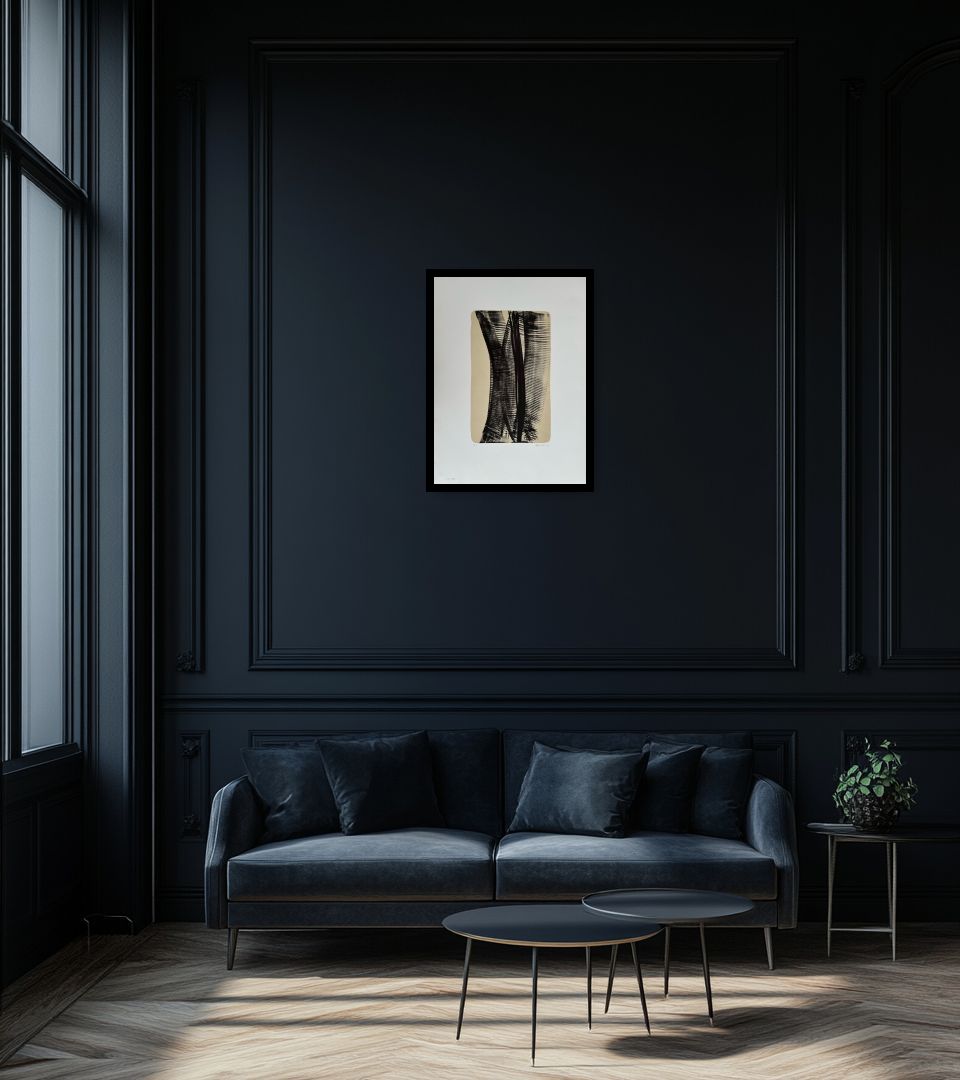
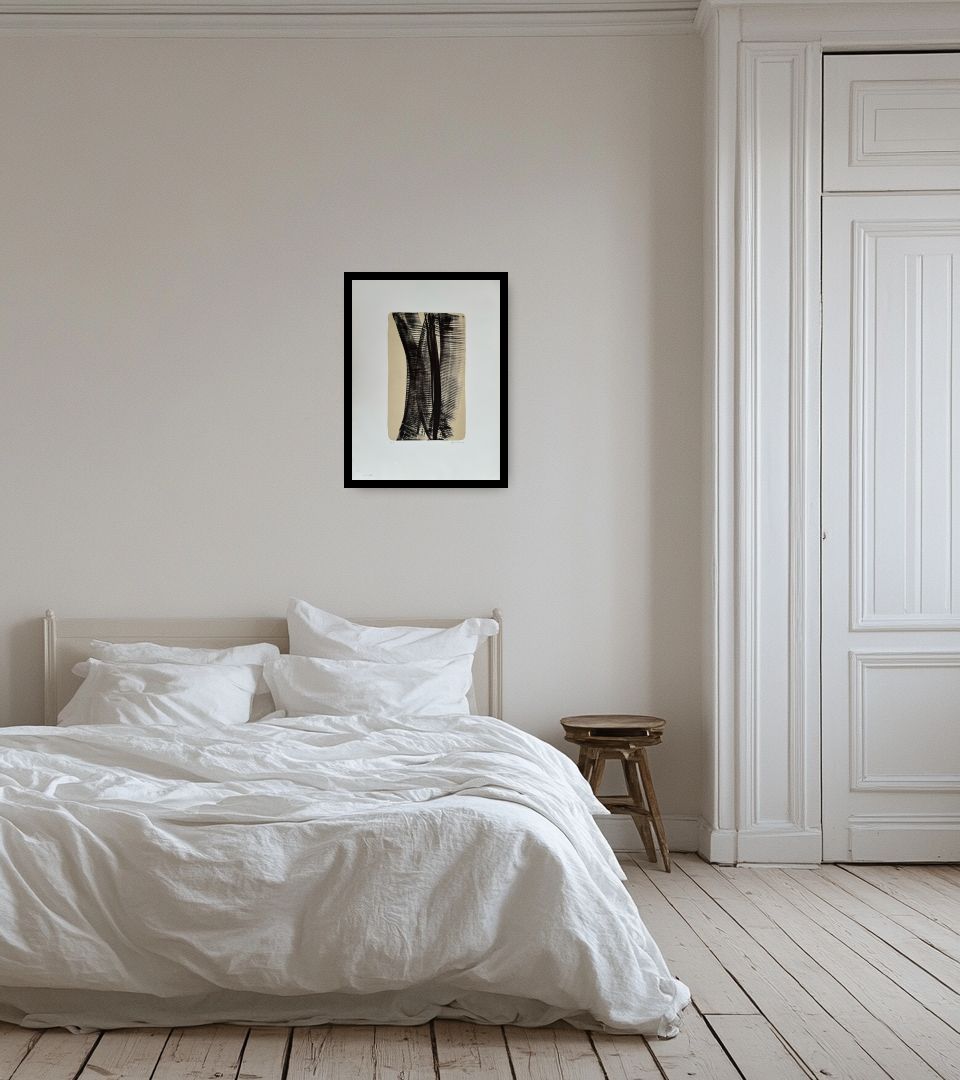
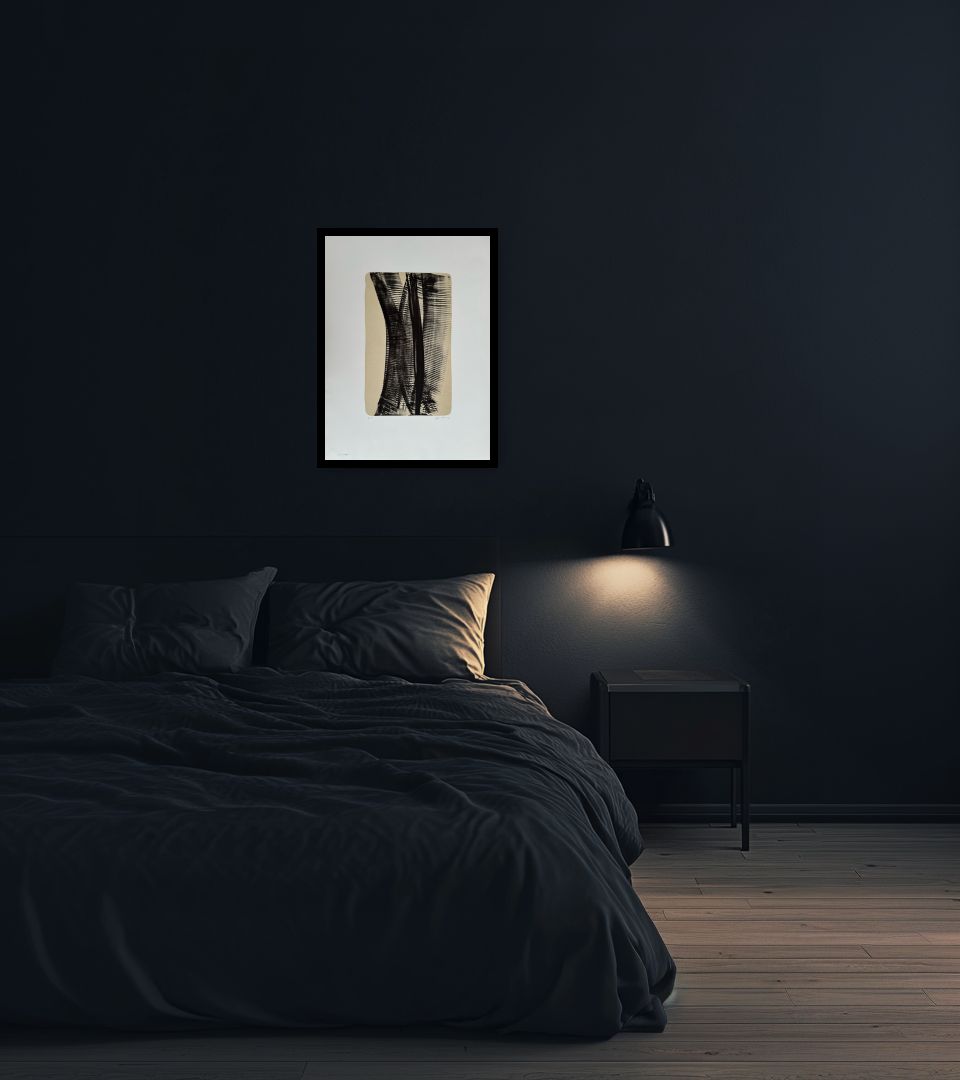
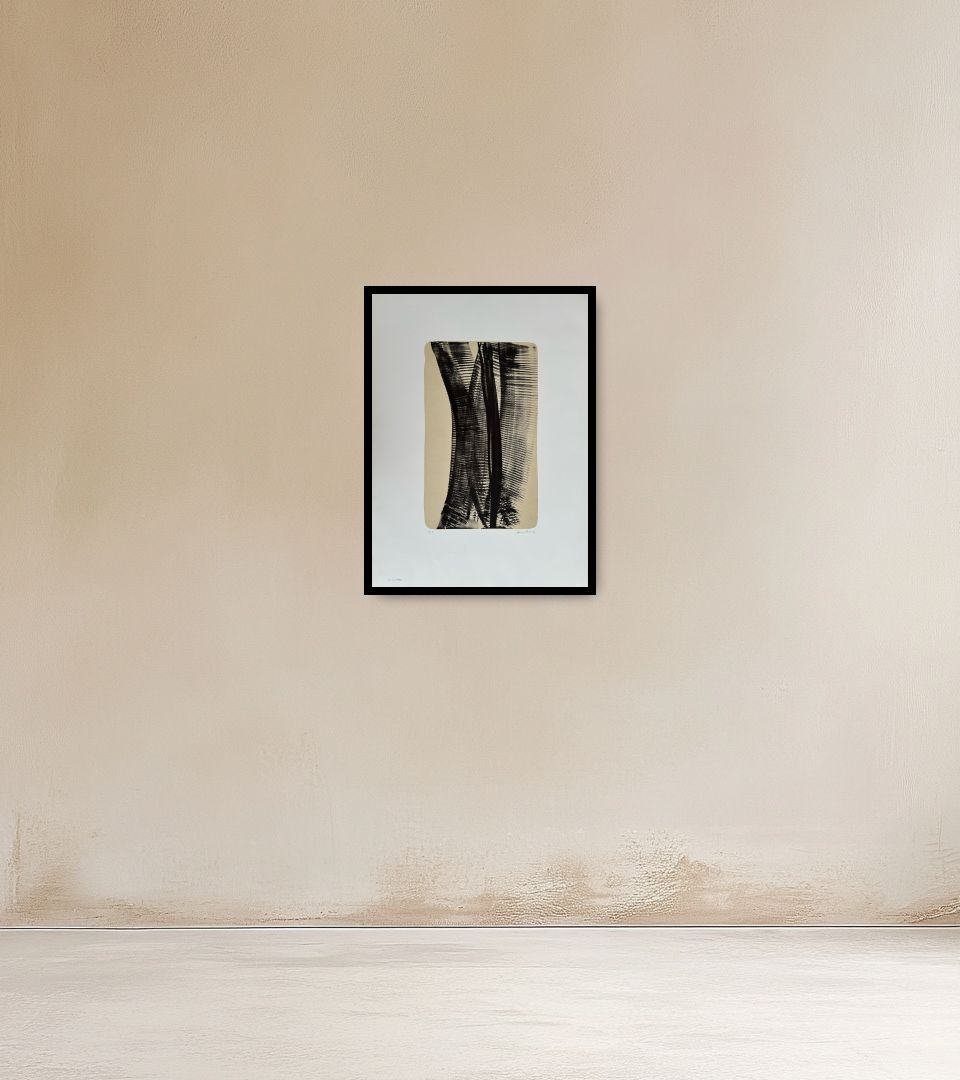
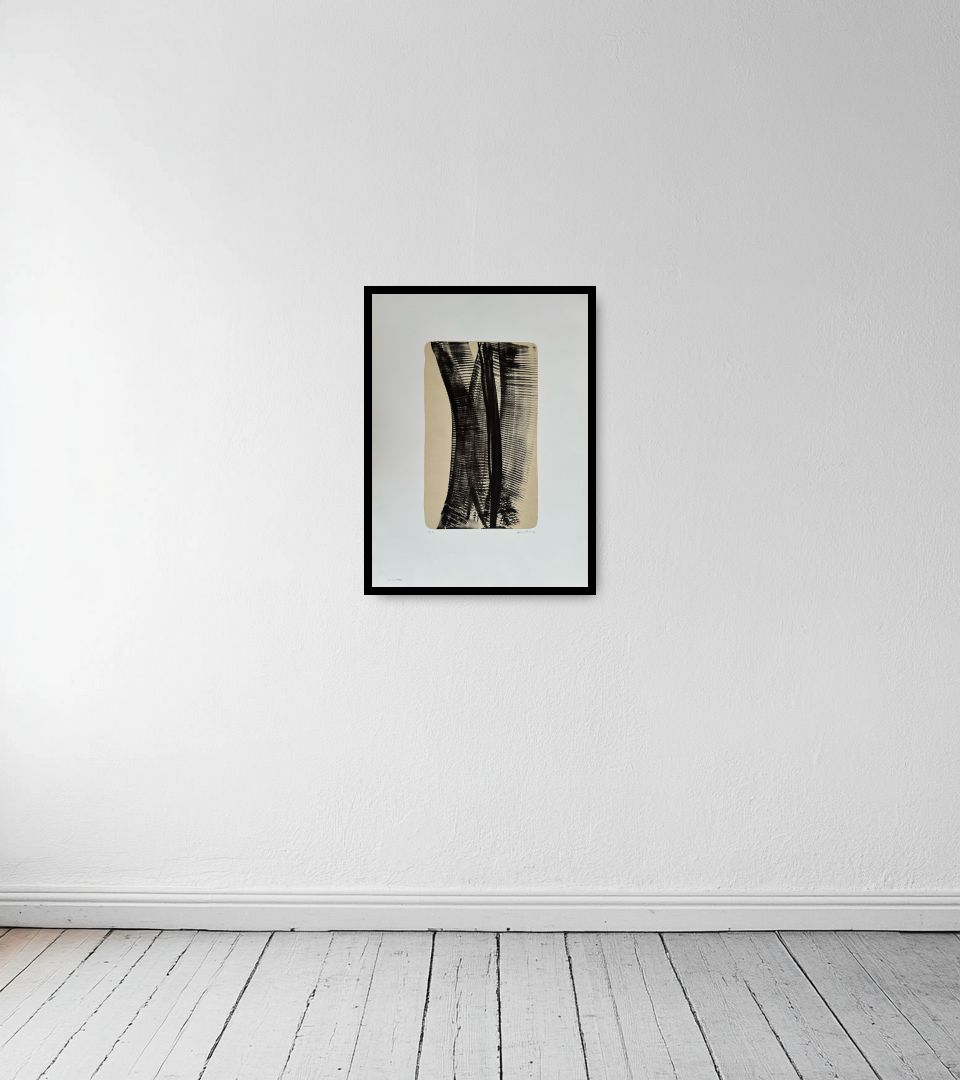
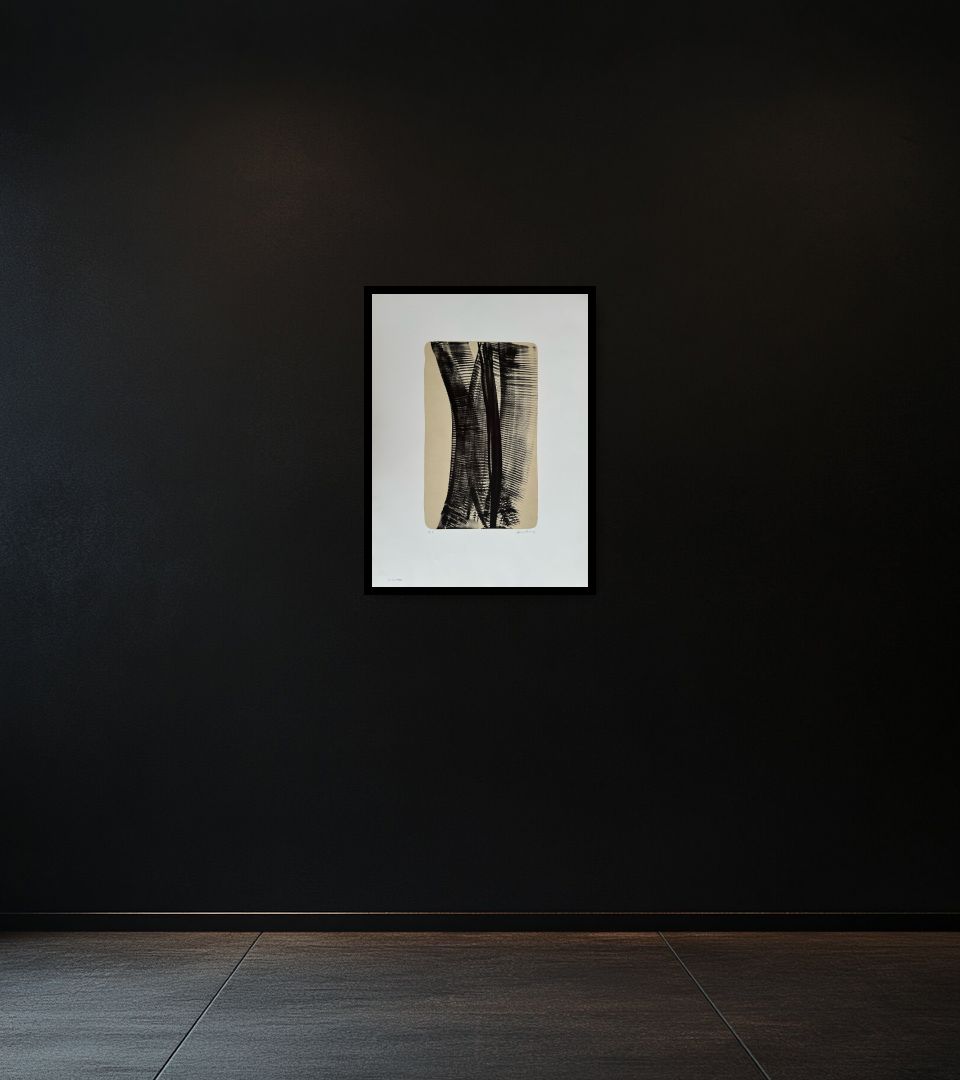
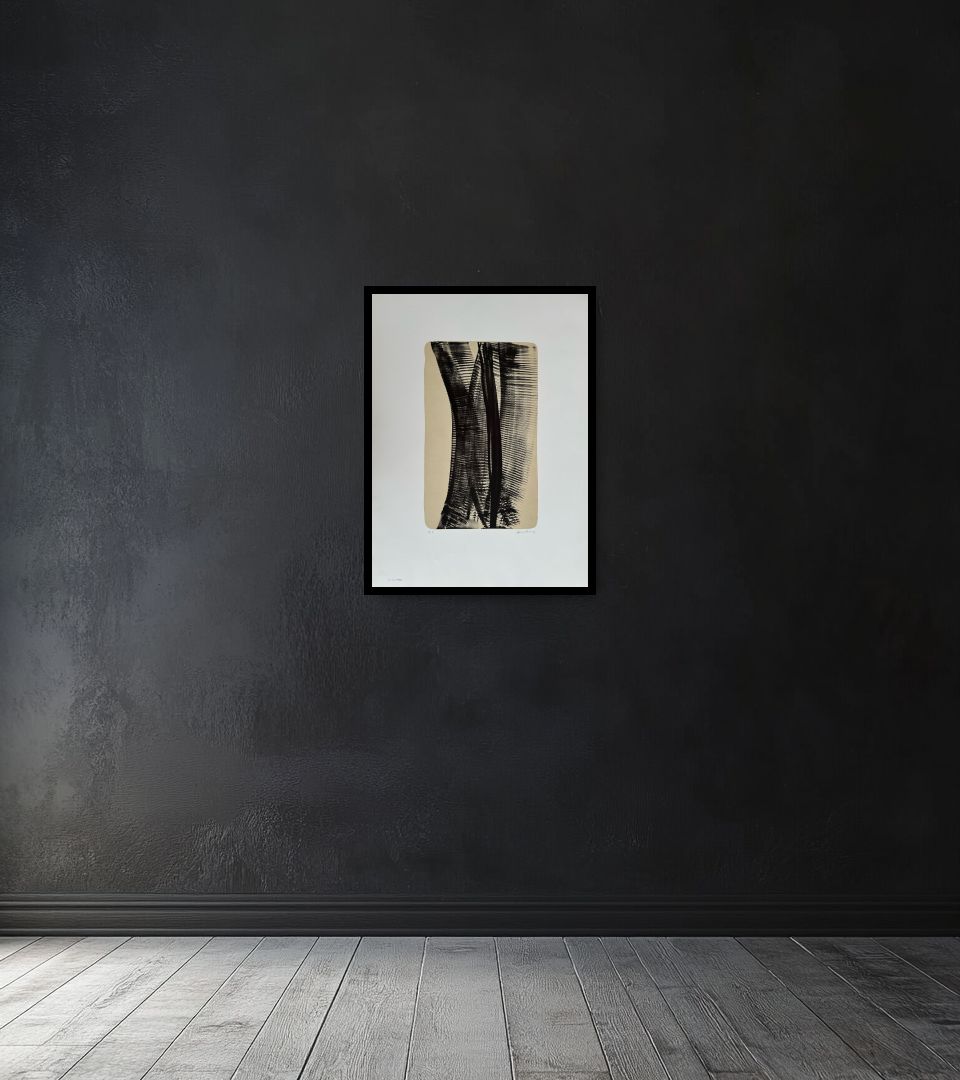
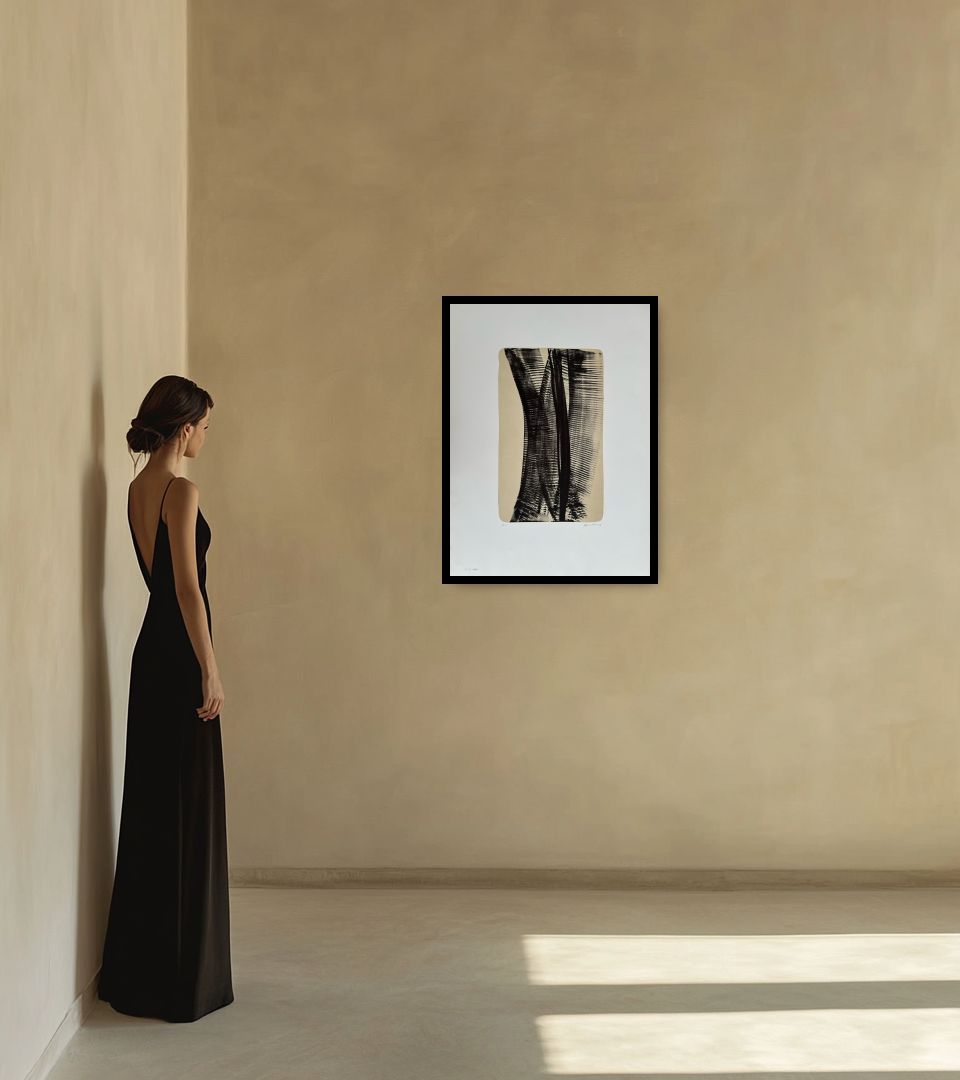
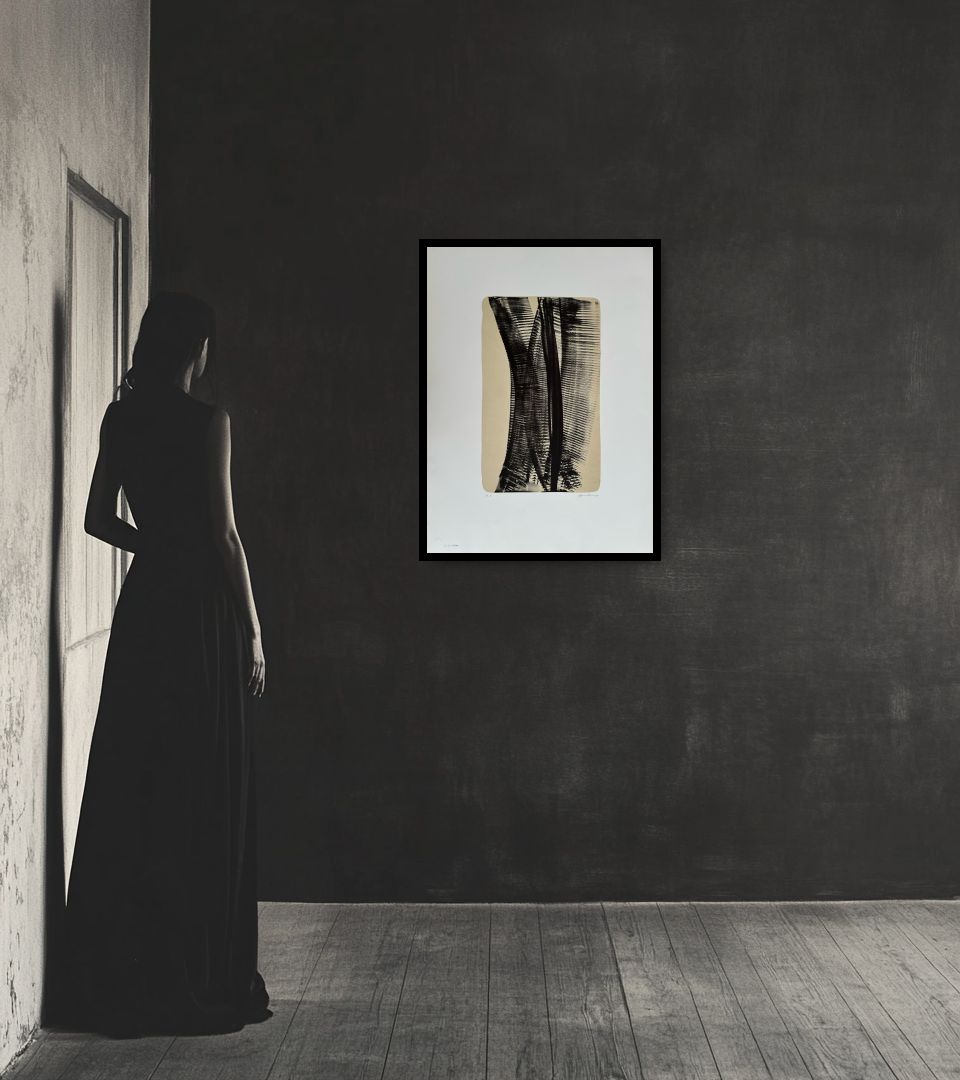
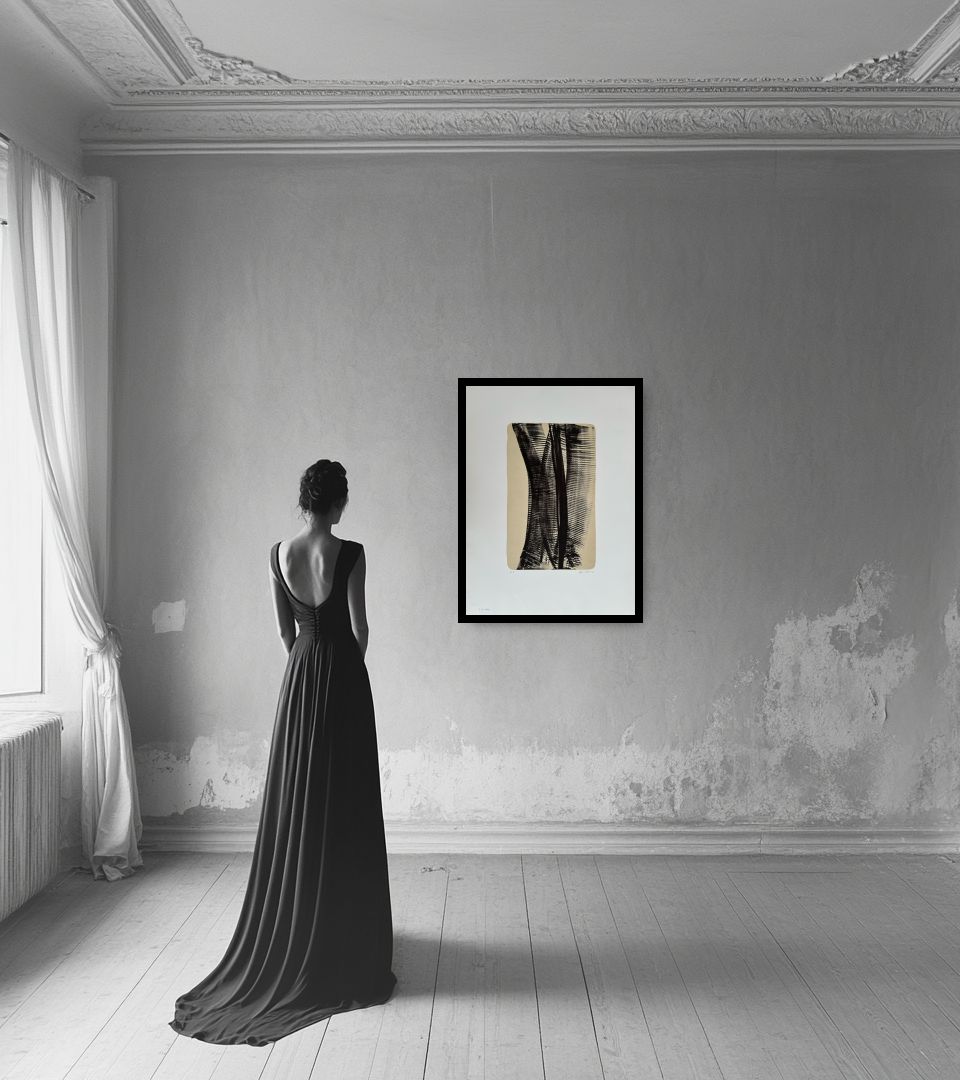
— The artwork embodies a synthesis of motion and restraint. The black and sepia tones flow across the page in undulating verticals, their texture alternating between opacity and transparency. The marks seem woven like fibers of sound — dense at the base, luminous at the crest — transforming gesture into architecture.
Hartung’s precision transcends control; his lines are both calculated and instinctive. The subtle curvature and repetition of strokes suggest rhythm rather than form, evoking the pulse of breathing or the sway of wind through reeds. This is abstraction as meditation, where each movement arises from necessity, not intention.
Through L 1974-3, Hartung approaches the boundary between painting and music. The visual cadence replaces melody, and silence becomes its counterpoint. The work invites the viewer into a state of attentiveness — a stillness where energy, once unleashed, becomes harmony.
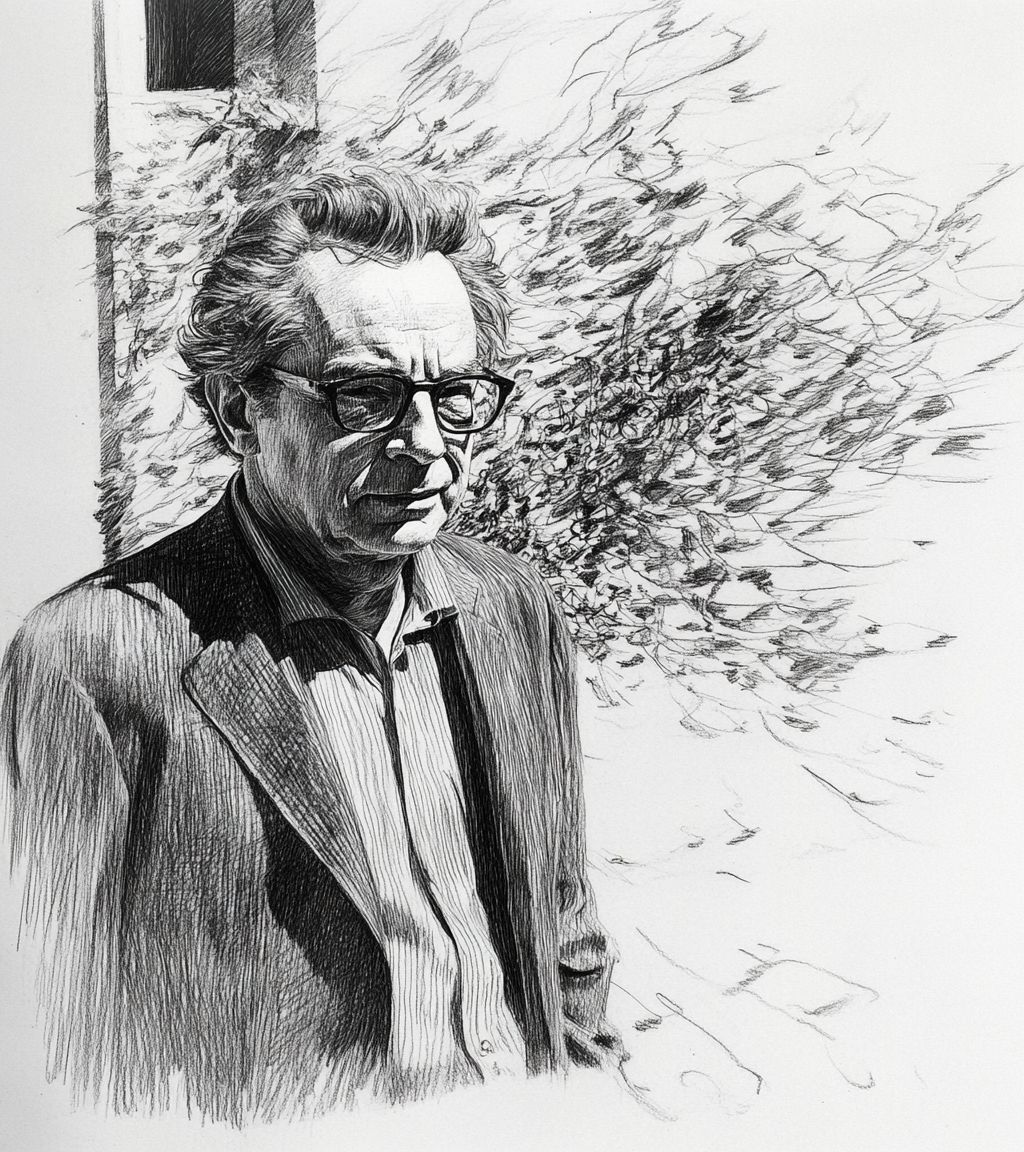
Hans Hartung is best known for his gestural abstract paintings, marked by dynamic brushstrokes, scratches, and graphic lines that appear both spontaneous and deliberate. Hartung’s style bridges the European tachisme movement and abstract expressionism, making him a key figure in the global development of gestural abstraction.